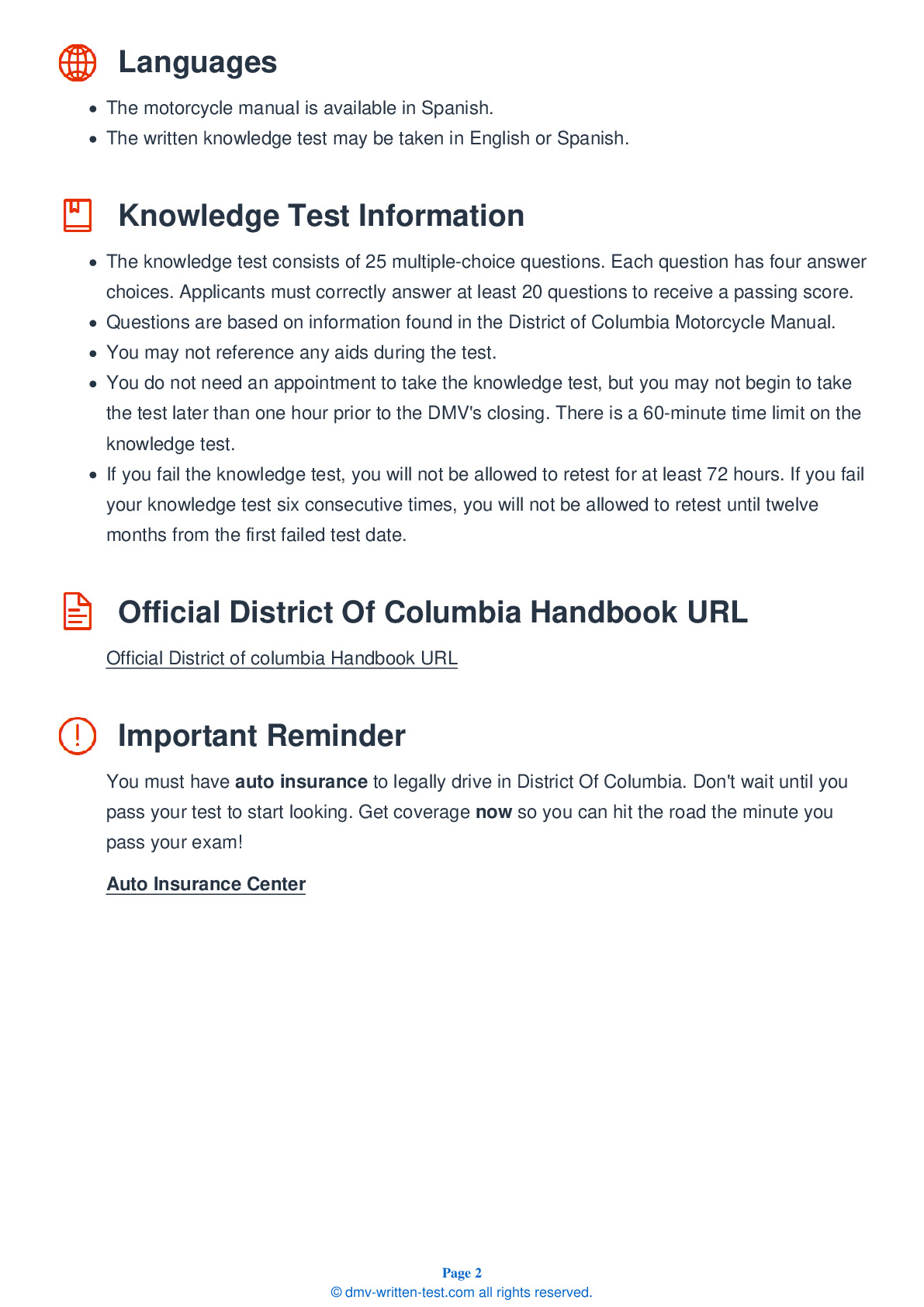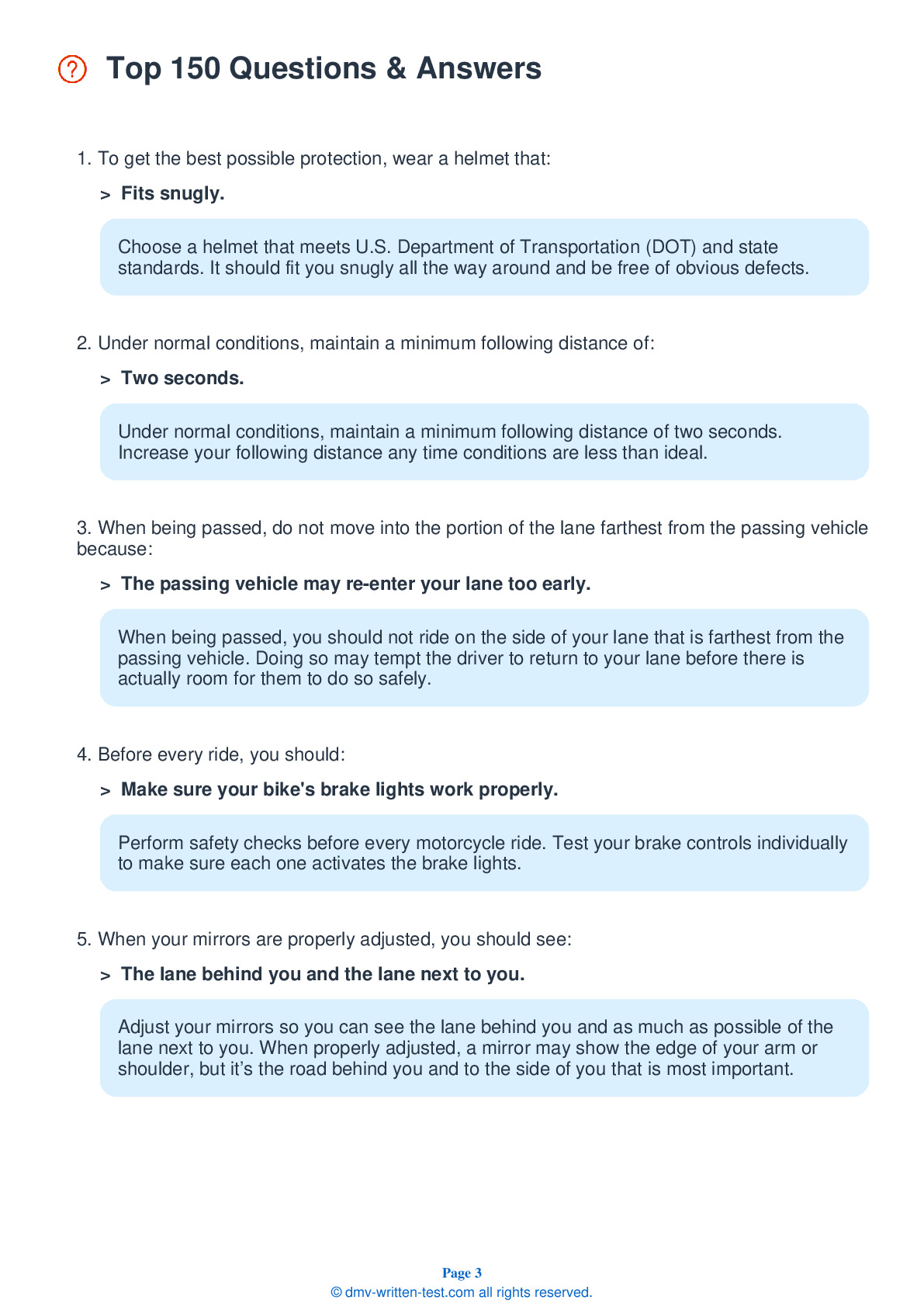2025 District Of Columbia Motorcycle Permit Test 15
The following questions are from real DMV written motorcycle permit tests. These are some of the actual permit questions you will face in District Of Columbia when getting your motorcycle learners permit. Each motorcycle theory practice test question has three answer choices. Select one answer for each question and select "grade this section." You can find this button at the bottom of the drivers license quiz. For a complete list of questions and answers for District Of Columbia please visit https://cheat-sheets.dmv-written-test.com/en/district-of-columbia/motorcycle.
Number of Tests
Number of Question
Passing Score
7. Motorcycle riders:
Explanation
Longterm exposure to wind and engine noise can cause permanent hearing damage, even if the rider is wearing a full-face helmet. Wearing ear plugs or other hearing protection can guard against damage while still allowing the wearer to hear important sounds like horns and sirens.
8. How does the stopping distance for motorcycles compare to the stopping distance for cars?
Explanation
Under normal conditions, the stopping distances for motorcycles is nearly the same as it is for cars. However, slippery pavement makes quick stops especially difficult for motorcycle operators.
9. In a slow, tight turn, the rider should:
Explanation
When taking normal turns, lean at the same angle as your motorcycle. However, in slow, tight turns, you should counterbalance the leaning motorcycle by keeping your body upright.
10. When riding with a passenger, you should tell them to do all of the following, except:
Explanation
To help keep the operator focused on riding, passengers should avoid unnecessary conversation or movement. Passengers should get on a motorcycle only after the engine has been started. They should sit as far forward as they can without crowding the operator and hold firmly onto the operator's waist, hips, or belt.
11. To best control a motorcycle, a rider should:
Explanation
When riding, sit so that you can use your arms to control the motorcycle rather than to hold yourself up. Your arms should be slightly bent when you hold the handgrips. To help maintain your balance, keep your knees against the gas tank and your feet firmly on the footrests.
12. When entering a highway or curve, motorcyclists riding in a group should:
Explanation




